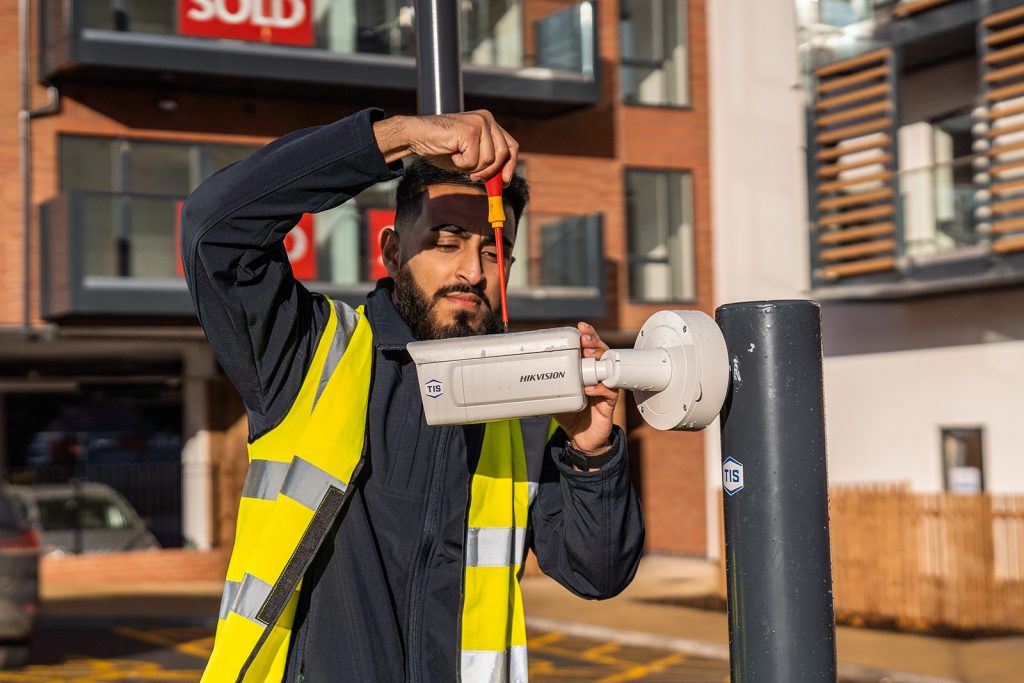Optimising asset management for IRC operational teams
Integrated Retirement Communities (IRCs) are complex ecosystems that require meticulous and proactive management to ensure both the safety, well-being, and satisfaction of residents, and the efficient, cost-effective day-to-day running of the facilities by the operations team.
Asset management plays a crucial role in the effective functioning of IRCs, encompassing the tracking, maintenance, and optimisation of physical assets such as buildings, equipment, and devices. But it’s also a difficult one to administer effectively. It is a continuous and dynamic process that demands both short-term interventions and long-term strategic planning.

Challenges in asset management for operational teams
Operations teams and facilities managers have to grapple with a multitude of challenges, amplified by disparate systems installed by different contractors during the build phase of the development, along with different ongoing service and maintenance contractors.
The resulting complexity makes it difficult to identify, catalogue, and track assets with information about their location, inspection history and replacement schedule. It becomes difficult to stay on top of the problem history of each device or where recurring problems need to be addressed, or whether all assets are up-to-date with the latest regulations and compliance requirements.
The importance of proactive asset management
For many, the challenges of the asset management process result in the need for a dual approach. Nowhere is the phrase ‘You can’t manage what you don’t measure’ more relevant than from an asset management perspective. If you don’t know where all of your assets are located, how many you’ve got or what condition they are in, an initial short-term, intensive sprint intervention is likely required to establish a baseline of asset performance and reliability.

From there, it becomes more of a marathon, with a slow, steady, proactive and planned approach to asset management yielding long-term benefits. By investing the time and effort to plan and establish a robust asset management process, you can ensure smooth operations, cost savings, and enhanced safety for residents.
- Improved resident satisfaction: Effective asset management ensures that systems, technologies, and devices are well-maintained and in optimal condition, enhancing the overall resident experience.
- Increased efficiency: By tracking and maintaining assets, you can identify areas for improvement, optimise efficiency, and reduce costs, ultimately leading to improved financial performance.
- Compliance with regulations: A comprehensive asset management strategy ensures adherence to legal and regulatory requirements, minimising the risk of fines and penalties.
- Enhanced reputation: A solid approach to safety and security through robust service and maintenance schedules enhances your reputation, attracting more residents and providing a competitive edge.
- Reduced maintenance costs: Regular maintenance and efficient asset usage reduce overall maintenance costs and prevent major issues from arising.
- Improved asset lifespan: Tracking asset usage and implementing maintenance schedules allows for more efficient usage, reducing wear and tear and extending the lifespan of assets.
- Better operational and financial planning: A thorough understanding of assets and associated costs enables informed financial planning, reducing the risk of unexpected expenses and improving overall cost efficiency.
- Maximised budgets: Data-driven insights can help you to make informed decisions, enabling you to maximise value and strategically plan asset upgrades within budgets.

Enhancing your asset management practices through technology
Having been at the forefront of converged infrastructure and systems for the past decade, we believe it will gradually become the go-to option for all smart, forward-thinking IRC operators who recognise the overall benefits of longer-term planning. And whilst convergence rightly gets the plaudits for its role in modernising and future-proofing IRCs, its additional role in optimising your asset management strategy shouldn’t be overlooked.
Here’s how it can help enhance your processes:
- Streamlined operations: Interconnectivity between systems and technologies provides a centralised management point for multiple disciplines – from warden call, to phones, fire alarms and intruder detection – enabling more accurate monitoring and reduced manual intervention.
- Economies of scale: Converged systems allow for smarter scheduling of service and maintenance activities by leveraging data gathered from devices. This ensures that the right engineer with the relevant skill set and necessary equipment and spare parts is dispatched, reducing costs and improving efficiency by getting the fault fixed the very first time.
- Efficient cataloguing: Technology, such as an asset management platform, facilitates easy cataloguing of devices by adding ‘unique references’ and capturing key information like make, model, installation date, testing history, and more. Our asset management platform, EFACS, feeds this business intelligence into a dashboard, which when interrogated, provides valuable insights for driving efficiencies, making it possible to see device first-fix rate – by site, by building, by engineer – and if it wasn’t fixed the first time, why not? Whatever the problem, having that information enables you to be more strategic about how you manage the assets moving forward.
- Pinpointing pinch points and mitigating risk: Converged technology enables the identification of device failure rates, allowing you to anticipate critical spares needed, and address potential pinch points, minimising risks and enhancing resident safety. Take your PBX as an example, not only does it support the phone system, it also supports warden call, DECT / WiFi coverage and also offsite monitoring. So, if the PBX fails, you’ve got no life critical cover in your apartments and no DECT / WiFi coverage on your mobile phones, which is what staff use to take alerts from the warden call system. The result? Massively increased resident risk. Visibility of these pinch points means you can start to look at device failure rates, availability of critical spares and what to have in stock, onsite, for immediate availability in the event of an incident.
- Monitoring service level agreements (SLAs): By utilising data about assets, it is possible to monitor the performance of service and maintenance contracts, ensuring that SLAs are met and faults are promptly addressed. Finally, when it comes to service and maintenance contracts, having the right data about your assets also provides full visibility of whether SLAs are being met. Are first-time fixes going up or down? Are faults being logged properly and responded to? Is the response time in-line with the contract?
Optimise operations, enhance resident satisfaction, maximise budgets
Asset management is a vital aspect of running successful integrated retirement communities. By adopting a proactive approach that combines short-term interventions with long-term strategic planning, you can optimise your operations, enhance resident satisfaction, and drive financial performance.
Understanding where every asset is located, being proactive with maintenance schedules and staying ahead of the curve, you can create safe, efficient, and sustainable environments for residents, ensuring a thriving community for years to come.
Latest news
Why real compliance isn’t a checkbox – it’s a board-level superpower
It’s time to change the conversation – from compliance as a constraint, to compliance as a strategic advantage.
Why the cheapest option can be a step backwards for compliance, safety and service
Everyone promises low prices and claims to hit the brief. But is going with the lowest bidder always the smartest choice?








